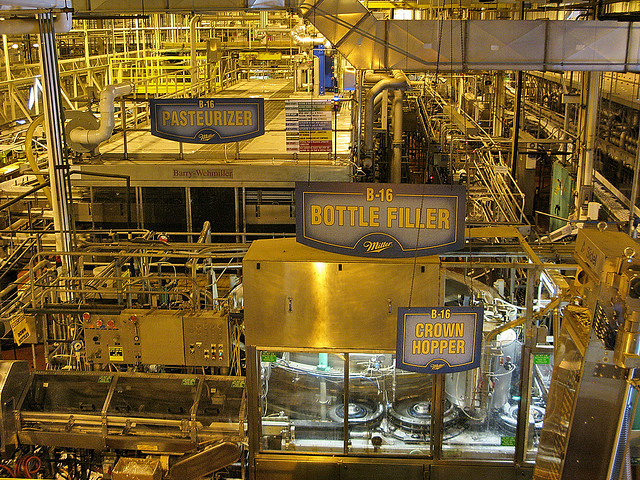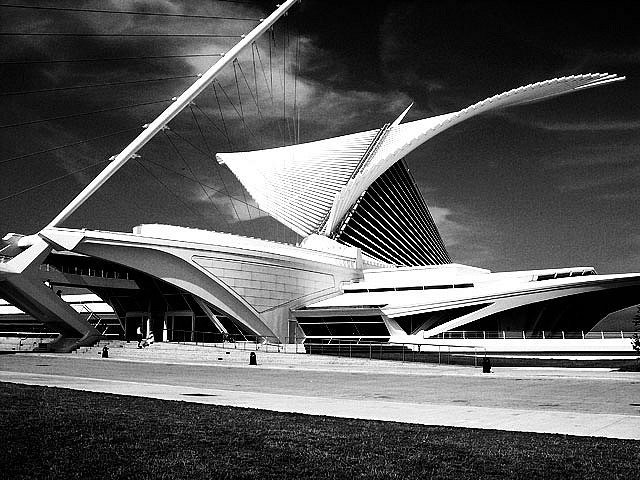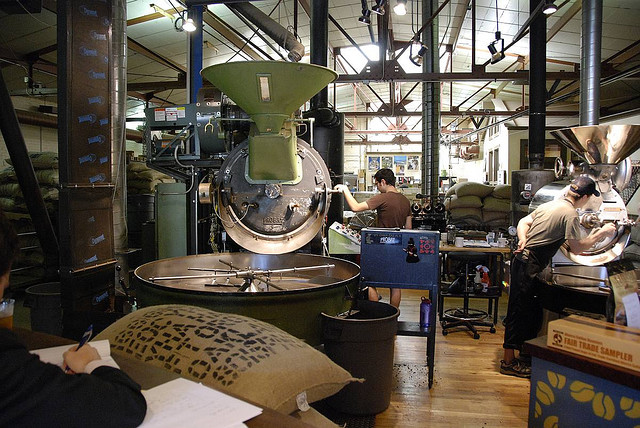Oft Overlooked: Milwaukee, Wisconsin
When you think of Milwaukee, if you think of Milwaukee, Pabst Blue Ribbon or Miller Brewing may spring to mind. German immigrants opened breweries in the 1850s, and the city is still rightfully branded with beer. But today it is much more than that, too.

(source)
Its larger, Southern counterpart, Chicago overshadows Milwaukee. (I am a native Chicagoan and I really like Milwaukee.) Last week I made it up there and spent a lovely day at an urban farm and the city’s art museum.
Like the Guggenheim in New York and the Oakland Museum in California, the building of the Milwaukee Art Museum is a piece of art in itself. Designed by Spanish architect Santiago Calatrava, the museum is shaped liked a bird taking flight over the lake. Large metal beams extend from the museum, mimicking wings, and steel cables stretch into tail feathers. The beams descend in the evening, when the museum closes and the bird lands, and reopens each morning.

(source)
If the magnificent structure weren’t compelling enough, the collection of the MAM is everything you want out of a small museum – comprehensive but precise with famous work alongside new pieces by great contemporary artists. One of Andy Warhols’ Brillo Boxes next to a Robert Smithson sculpture with Tara Donovan’s Bluffs, a sculpture made in 2009, in the background. I have never seen a piece of artwork made in the last year in the permanent collection of a museum. Made of thousands of buttons, Bluffs reminds me of a Dr. Suess dream, a Martian landscape, and New Mexico.
Hidden in the basement, the museum welcomes you to their “Chair Park” where visitors can sample the chairs usually kept behind glass: Frank Lloyd Wright’s Peacock Chair, Eero Saarinen’s Tulip Chair, and many others.
The museum along with the Chipstone Foundation also commissioned a permanent installation by Wisconsin artist Martha Glowacki: Loca Miraculi: Rooms of Wonder. The installation is a take on cabinets of curiosity, a predecessor of the museum from the 1600s, in which wealthy men displayed their collections of both manmade and natural objects that elicited awe and wonder in the viewer.
Glowacki’s installation is made of three distinct rooms: (1) Animal, Vegetable and Mineral, (2) Ceramica, and (3) Optical Devices & The China Cabinet. Each room combines new pieces of work alongside found antique objects. The China Cabinet, my favorite section, is subdivided into Raritas, Rei Extincta, Rei Inexplicabila, and Errata. Rei Extincta contains not extinct animals but extinct objects like chamber pots, puzzle jugs and posset pots. The puzzle jugs and posset pot were communal drinking vessels that went extinct when individual glasses became standard.
The installation mimics cabinets of curiosities down to the drawers that viewers pull out themselves. Early cabinets were in someone’s large drawing room or house and visitors would open doors and drawers to find more things, as organization wasn’t very important in these early museums. In Ceramica, each display cabinet has more books, images, fossils and sculptures hidden in lower layers.

(source)
After a visit to the museum, you can walk about a mile North up the lakefront through a large and green Milwaukee park to Alterra, a coffee shop and café, which not only brews a great cup but is located in the historic Milwaukee River Flushing Station. Built in 1888, the Flushing Station pumped water from Lake Michigan into the Milwaukee River to dilute the pollution from sewage running into the lake. The pump was in working order until 1980 when it became unnecessary because of other improvements in city infrastructure. Today the Milwaukee Metropolitan Sewage District maintains the Flushing Station for educational purposes, and the industrial room displays large placards encouraging city residents to save their rainwater.
In the northern corner of the city about ten miles from MAM and Alterra, Growing Power saves their rainwater, running off the edges of their roofs, in large collection barrels. Started by Will Allen, former basketball player and son of a sharecropper, Growing Power is an internationally recognized urban farm that will astonish anyone, even if you’ve never heard of compost.
The main storefront and garden operations are in a poor, urban neighborhood, and they offer fresh produce year-round to the surrounding community.
In addition to the tons(!) of compost and soil they create each year (with the help of food waste and worms), Growing Power offers one of the most efficient and complex aquaponics systems in contemporary urban gardening. In a three tired system, they grow tilapia and silver lake perch in large tanks buried four feet in the ground. Water from the tanks, filled with the nutrients of the fishes’ waste, is pulled up to plants above it, tomatoes on the top level, and watercress on the middle level. The fish fertilize the plants, then the plants filter the water which descends again into the fish tank. On one and a half acres, the farm grows 30,000 fish a year. 30,000. As well as chickens, and mushrooms, and thousands of vegetables.



Follow us on Twitter to get the latest on the world's hidden wonders.
Like us on Facebook to get the latest on the world's hidden wonders.
Follow us on Twitter Like us on Facebook